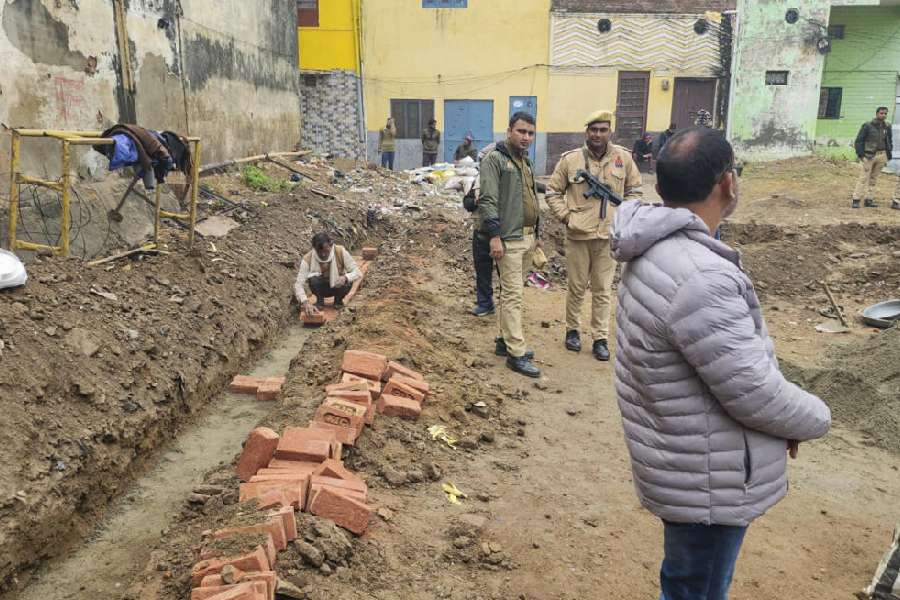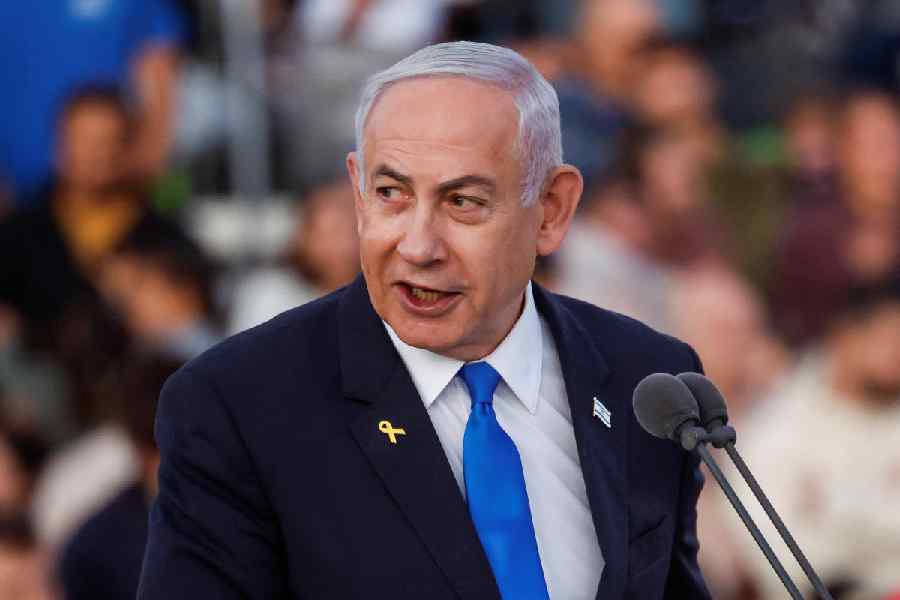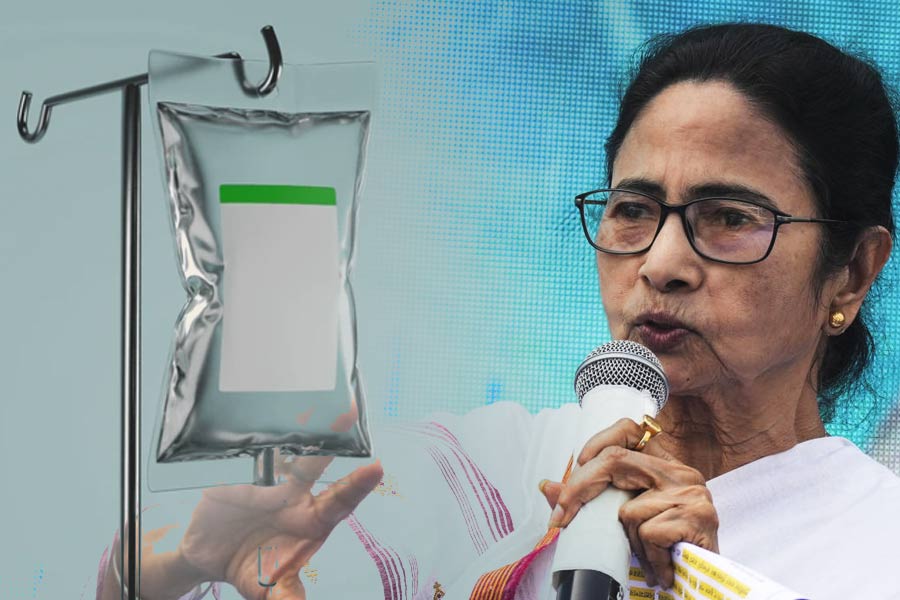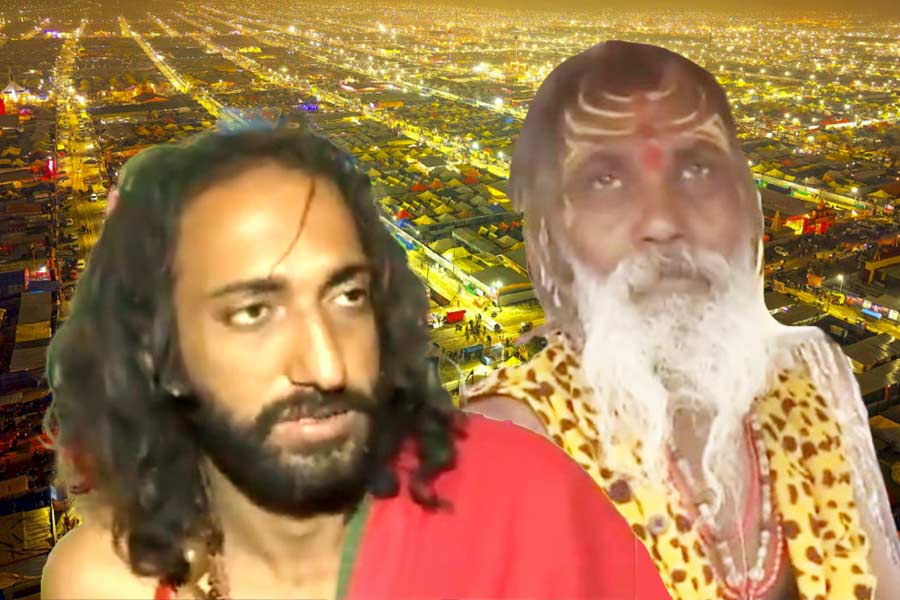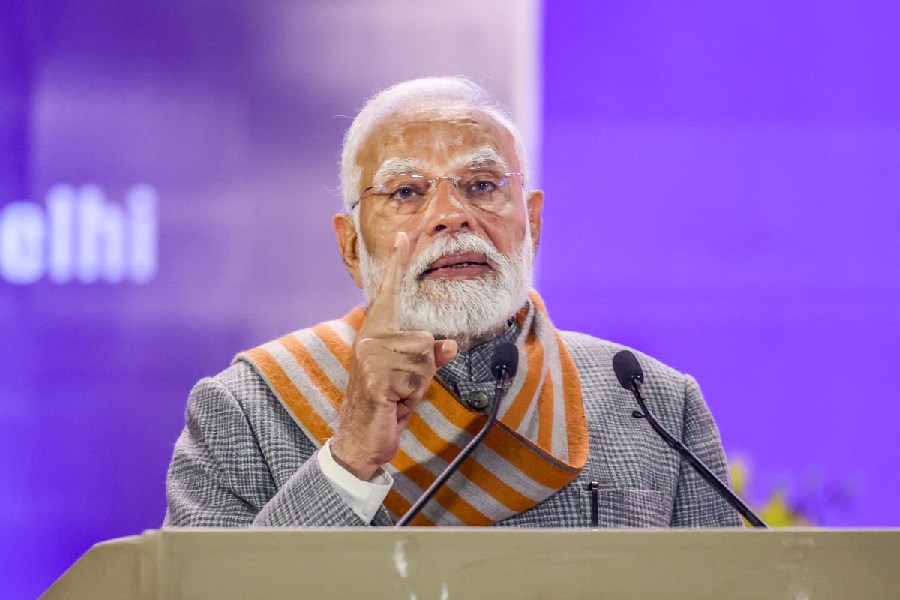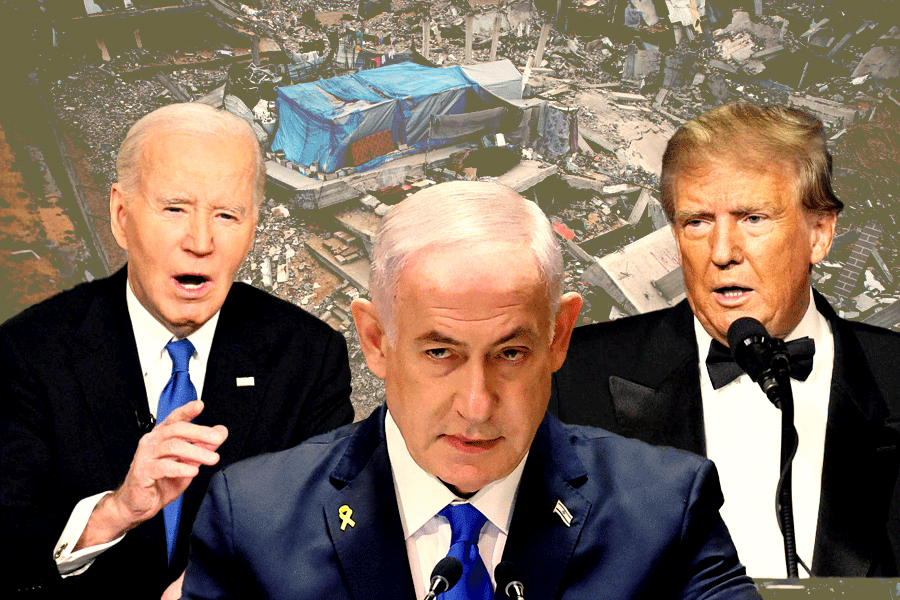The Sambhal district authorities on Saturday performed a ceremonial "bhumi pujan" for a police outpost near the Shahi Jama Masjid, a day after they surveyed an open ground in front of the mosque which had been at the epicentre of a clash that claimed four lives on November 24.
The move underscores Sambhal’s importance to what appears chief minister Yogi Adityanath’s latest Hindutva experiment, replete with parallels to the way the Sangh Parivar built political momentum against the Babri Masjid in Ayodhya in the ’80s and ’90s, political observers said.
A team led by additional superintendent of police Sri Chandra measured the "government land" near the Jama Masjid and found it appropriate for a police station — conducting the exercise while Friday prayers were on at the mosque. Later, some local people met Chandra and showed him papers they claimed proved their ownership of the surveyed plots.
Ayodhya too had witnessed the establishment of a Ram Janmabhoomi police chowki (outpost) in the late 1940s when Digvijaynath, mahant of the Gorakhnath temple, was spearheading the movement to replace the Babri Masjid with a Ram temple. His successor Avaidyanath later led the movement for a while.
Sambhal is rapidly becoming the centre of a similar controversy under Adityanath, successor to Avaidyanath as mahant of the Gorakhnath temple.
The mob-police clash that killed four people on November 24 occurred during a court-ordered survey of the Jama Masjid, following a petition that claimed Mughal emperor Babar had the mosque built after razing a temple that stood at the site.
This too carries shades of the Ayodhya movement, which was fuelled by the allegation that Babar had got the Babri Masjid built after destroying a Ram temple. Eventually, a Hindutva mob destroyed the mosque in 1992, and the Supreme Court handed the site over to Hindu petitioners in 2019.
The outpost near the mosque will function under the Sambhal police station and was planned in the wake of the November 24 violence.
"The bhumi pujan (land worship) and foundation stone-laying ceremony were carried out following all prescribed rituals. Additionally, measures were taken to ensure the absence of vastu dosh (architectural defects) in the construction," said Shobhit Shastri, the priest conducting the ritual.
Additional superintendent of police Shirish Chandra told reporters: "The bhumi pujan for the new police outpost near the Shahi Jama Masjid has been completed. This outpost is being established from a security perspective. Sufficient police personnel are already deployed here and there was a long-standing demand from locals for a permanent outpost."
In another controversial move, the Adityanath government has got the Archaeological Survey of India deployed at two spots close to the Jama Masjid in Sambhal, tasked to dig up proof of the existence of old buildings of (Hindu) religious significance.
The excavation began early this week. "We have found some structures of religious importance. We will clean the place, build approach roads, renovate them and open them to the people," district magistrate Rajendra Pensiya said.
Recently, Adityanath publicly alleged that mosques in Sambhal were stealing power from the state utility and threatened action, appearing to try and build public opinion against these Muslim religious places.
"We have identified government land and will build a police station here," Chandra told reporters in Sambhal. "We’ll verify the (ownership) claims by the local people. The (new) police station will be known as Satyavrat Thana."
The Jama Masjid now falls in the area of the Sambhal Kotwali police station.
According to certain religious scriptures, Sambhal was known as Satyavrat during the Satya Yuga, as Mahadgiri during the Treta Yuga and as Pinhal during the Dwapara Yuga. These scriptures say the next and last incarnation of Vishnu will be born in Sambhal during the (ongoing) Kali Yuga.
Mosque secretary Zafar Ali said: "The land the administration identified today to build a police station belongs partially to local people and partially to the waqf board. They can’t raise any structure here without securing ownership rights."
Like Ayodhya, the Sambhal controversy has nourished itself on an order from a local court and hasty action by the local administration.
A Sambhal court ordered a survey of the mosque on the same day a petition was moved — November 19, 2024 — seeking the site’s handover to Hindus.
A proactive local administration and the court-appointed advocate commissioner arrived at the mosque the same afternoon to conduct a survey. The bloody clash occurred five days later during a second survey, which was allegedly accompanied by provocative shouts from a crowd of "Jai Shri Ram" – the catchphrase of the Ayodhya movement.
While the Ayodhya dispute had been going on since the early 19th century, a Faizabad court ordered the opening of the locks of the Babri Masjid site on February 1, 1986. An overeager local administration opened it within an hour.

